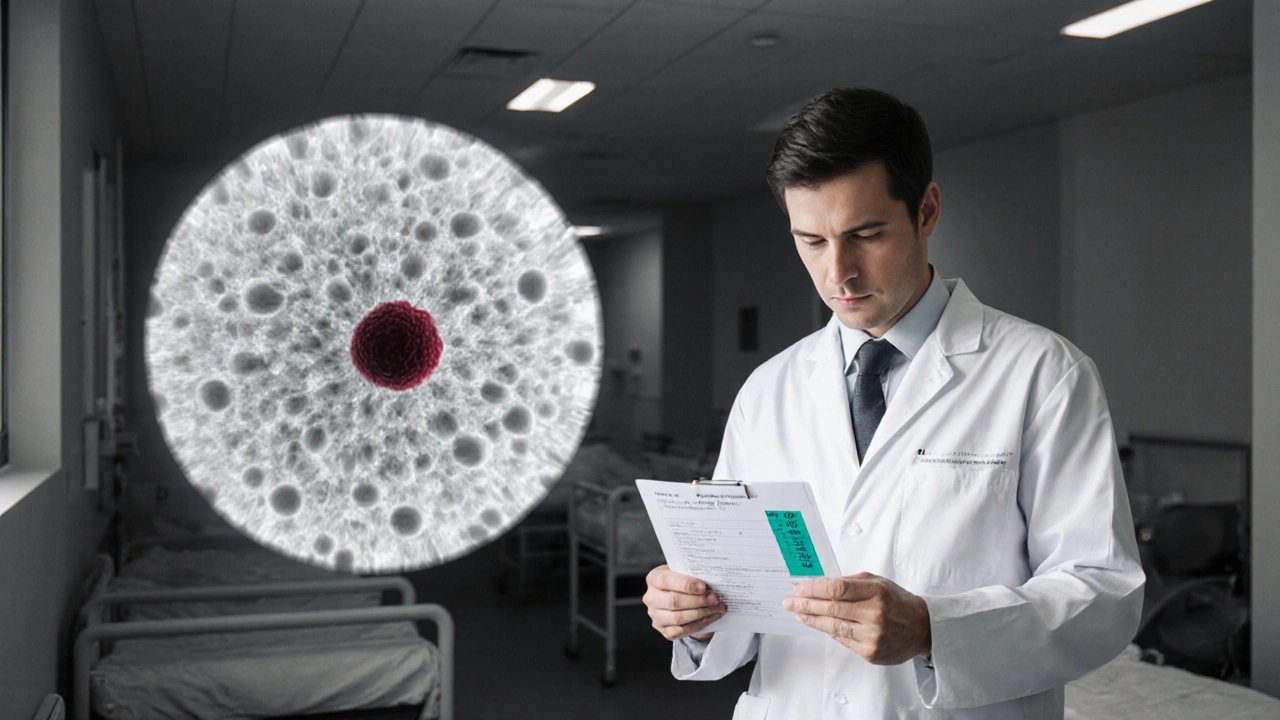Clostridium difficile: Causes, Risks, and Treatment Guide
When dealing with Clostridium difficile, a toxin‑producing bacterium that triggers severe colitis and watery diarrhea. Also known as C. diff, it often spreads in health‑care settings and can turn a routine antibiotic course into a dangerous gut infection. It accounts for roughly 15% of all hospital‑acquired diarrheal cases worldwide, and older adults or those with weakened immune systems are hit hardest. Knowing how it works lets you spot warning signs early and act before the illness spirals.
Antibiotic‑associated diarrhea, a common side effect where antibiotics disrupt normal gut bacteria, allowing harmful microbes to overgrow. When you take broad‑spectrum agents—especially clindamycin, fluoroquinolones, or cephalosporins—you’re unintentionally clearing room for Clostridium difficile to settle and release its toxins. The bacterium produces two main toxins (TcdA and TcdB) that damage the colon lining, leading to inflammation and the classic watery stools. This link explains why doctors stress careful prescribing and why a probiotic backup may be recommended during high‑risk courses.
Hospital‑acquired infection, infections patients pick up during a stay in a medical facility, often because of close contact and invasive procedures. Settings like hospitals, nursing homes, or dialysis centers provide the perfect environment for Clostridium difficile spores to spread through surfaces, hands, and equipment. Spores can survive on countertops for months, so cleaning crews rely on bleach‑based disinfectants and dedicated isolation rooms. Hand‑washing with soap and water is crucial because alcohol rubs don’t kill the spores.
Gut microbiome, the community of beneficial bacteria living in your intestines that helps digest food and protect against pathogens. A healthy microbiome acts like a security guard, keeping Clostridium difficile in check. When antibiotics or illness knock out those allies, the bug can take over and cause infection. Restoring balance with a fiber‑rich diet, fermented foods such as yogurt or kefir, and specific probiotic strains (e.g., Saccharomyces boulardii) can reduce recurrence risk. Researchers are also exploring post‑antibiotic microbiome transplants as a preventative step.
Key Strategies to Prevent and Manage C. difficile
First, follow the antibiotic stewardship rule: only take antibiotics when truly needed, choose the narrowest effective agent, and complete the prescribed course. Second, keep hands clean—wash with soap and water for at least 20 seconds, especially after bathroom use or before eating, because C. diff spores resist alcohol. Third, if you’re in a hospital, ask staff about room cleaning logs, isolation precautions, and whether visitors are using proper protective gear.
When infection strikes, clinicians typically start with oral vancomycin (125 mg four times daily) or fidaxomicin (200 mg twice daily), both of which stay inside the gut and spare many good bacteria. In milder cases, metronidazole may still be used, but newer guidelines favor the other two drugs because they lower recurrence rates. Monitoring kidney function and blood counts during therapy helps catch side effects early.
About 20% of patients see the infection return after treatment. If that happens, a fecal microbiota transplant (FMT) can reseed the gut with healthy bacteria and dramatically cut relapse chances. Another option is bezlotoxumab, a monoclonal antibody that neutralizes toxin B and is given once during the antibiotic course. Discuss these options with your gastroenterologist to decide the best path for you.
Below you’ll find a curated set of articles that dive deeper into related health issues—from managing medication side effects to coping with chronic conditions—so you can build a fuller picture of how infections, treatments, and lifestyle choices intersect.
Metronidazole for Clostridium difficile: When It Works and When to Choose Other Options
- Laura Ledas
- Aug, 17 2025
Explore when metronidazole is appropriate for Clostridium difficile infection, compare it to vancomycin and fidaxomicin, and get dosing, safety, and guideline tips.
Learn More